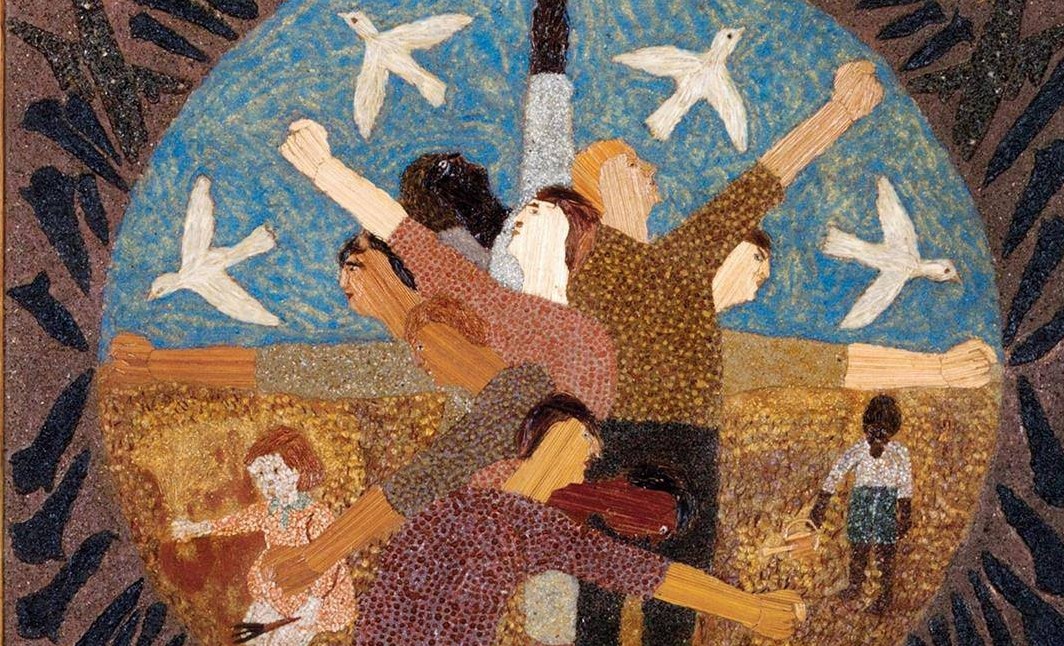The Tel Aviv Museum opened last week its first exhibition of Communist artist Melech Berger, aged 94, who for decades has been working outside the mainstream of the art world. His works – from the 1970s through the 2000s – are made of materials from nature (such as sunflower and other seeds, twigs, feathers, date-palm bark, small pebbles, and powder crushed from stones), and their themes focus on human rights, environmental, and class-working values. His works offer unexpected examples of ideologically engaged art, infused with faith, which set out to convey a message.
Melech Berger was born in 1926 in Czechoslovakia. At the age of three, his Chabad family immigrated to Brazil where they lived as farmers. He grew up in Brazil, became a member of the Communist Party, and was imprisoned because his involvement in working-class struggles. In 1951, at the age of 26, he immigrated to Israel and joined the Communist Party of Israel. He was member of a kibbutz until 1960, when he moved to Beer-Sheva and made his livelihood working in agriculture and gardening. In 1980, he retired on an early pension so that he could more fully devote himself to his artistic activity which he is still at to this very day.
Berger uses natural elements – such as leaves, seeds, bark and stone – as his palette to create unique pictures. Since 1971, he has produced some 500 works and held over 70 exhibitions. Passionate about nature and the environment, socialism and peace, his images include a mixture of natural scenes, portraits, and works on social topics, the environment, and peace.
On Melech Berger: https://bergermelech.wordpress.com/



